Interesting Stories Of Famous Outlaws From The American West
The Wild West certainly earned the “Wild” part of its name. Some of America’s most eccentric criminals ran riot in the west as bandits. These outlaws weren’t afraid to rob banks, trains, carriages, and anything else they encountered. Their exploits are the stuff of legend, with criminals like Butch Cassidy, the Wild Bunch, Pretty Boy Floyd, and others going down in history.
Some of these wild men were in it to help themselves. However, many supported struggling farmers, gave back to the community, and generally fought the good fight against tyranny. Of course, the infamous Doc Holliday stands out from the crowd, not because of his crimes or his generosity but because of his sheer skill with a loaded weapon. So, if you’re keen to learn more about the greatest gunslinger in the west and his cohort, read on for some astonishing true tales.
A Child of the South
Doc Holliday was born on August 14, 1851. He lived with his mother and father in Griffin, Georgia. His dad fought in and survived the Mexican-American war, and old Henry Holliday even brought home an adopted kid, Francesco, who became Doc’s brother. Of course, at the time, Doc wasn’t known as “Doc.” His birth name was John Henry Holliday.
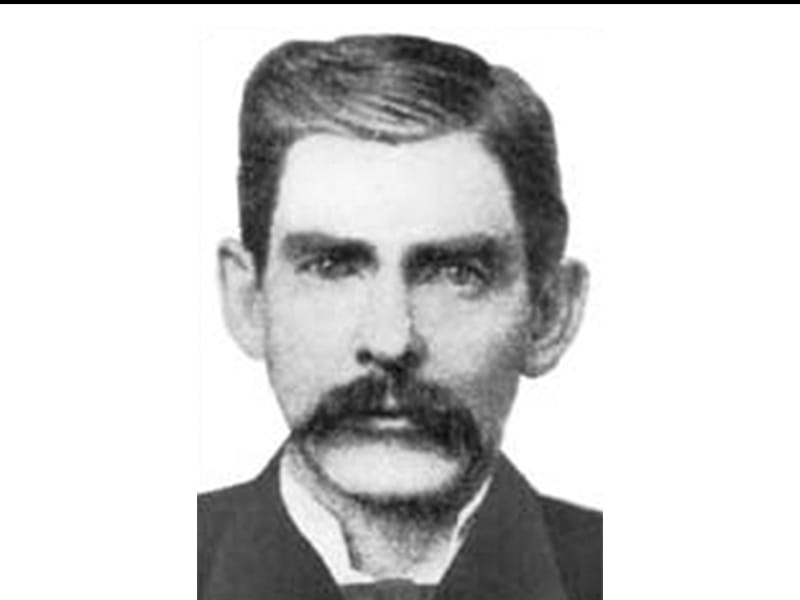
Source: Wikimedia Commons
Doc was born with a cleft palate, so he had a speech impediment when he was young. However, with the help of his loving mother, he learned to improve his speech. Who would have guessed that this cute kid sitting at his momma’s feet learning to speak would grow into such a fearsome legend?
One Clever Kid
“Doc” Holliday’s dad was a pharmacist, while his mom was a school teacher. He grew up in a well-educated family with a focus on healing and sharing knowledge. You really couldn’t ask for a more wholesome upbringing. And Doc lapped it up, developing a love of medicine and a passion for mathematics.
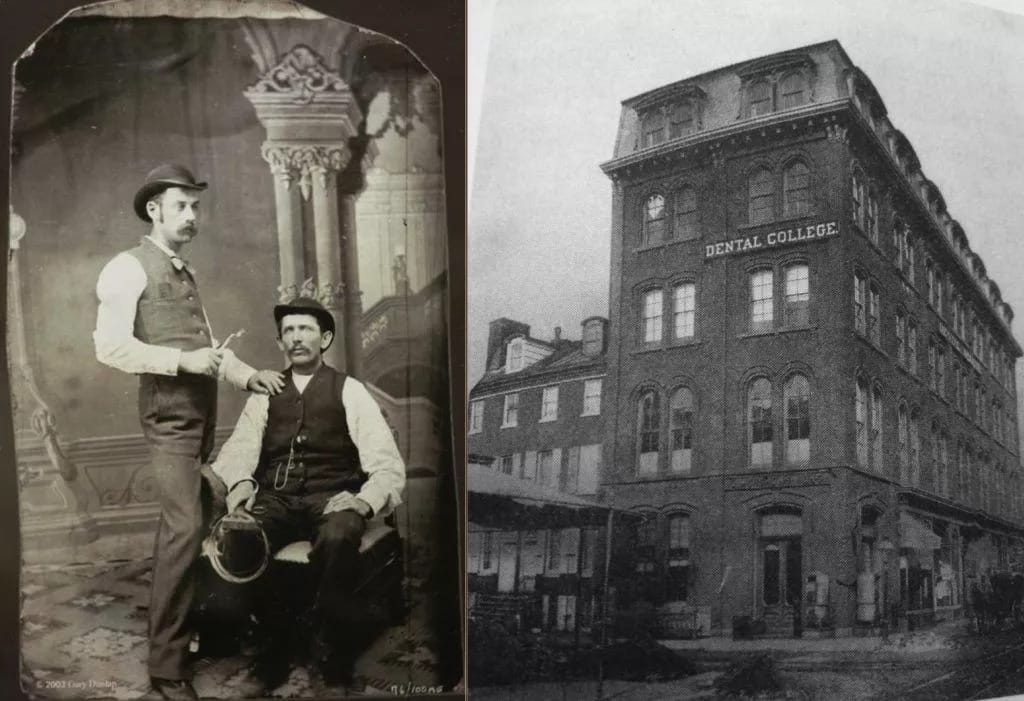
Source: Getty Images
He was a voracious reader, and while he would read anything he could get his hands on, Doc was chiefly interested in learning about science, math, and medicine.
Doc Could Have Been a Dentist
Though he had an idyllic family life, tragedy struck in his teenage years. Doc’s sweet and loving mother contracted tuberculosis in 1866. Young Doc was only 15 at the time, yet he had to watch his mother grow sicker by the day. She died not long after contracting the infectious lung disease.
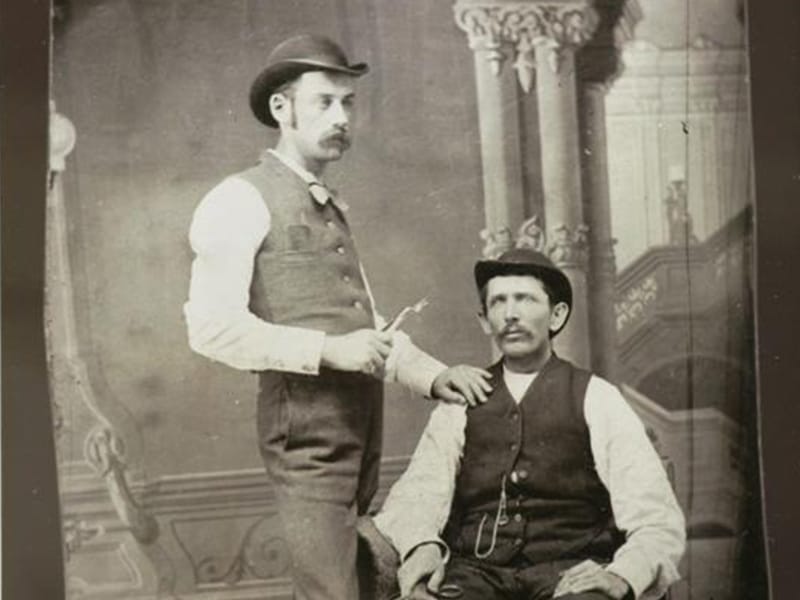
Doc dealt with his grief by pouring all his attention into his studies. He performed so well and achieved so much academically that he gained entry into the University of Pennsylvania School of Dental Medicine. Doc duly went to study in Philadelphia, graduated at 21, and began his life as a professional dentist.
The Impact of Boredom
You’re probably wondering how on earth this well-educated medical professional became a gunslinger. Well, it has a little to do with the place Doc chose to establish his dental practice. He went with Dallas, Texas, which was known for being a wild place at the time. Unruly though it was, Dallas had thriving oil and brass industries, so there was plenty of money to go around.
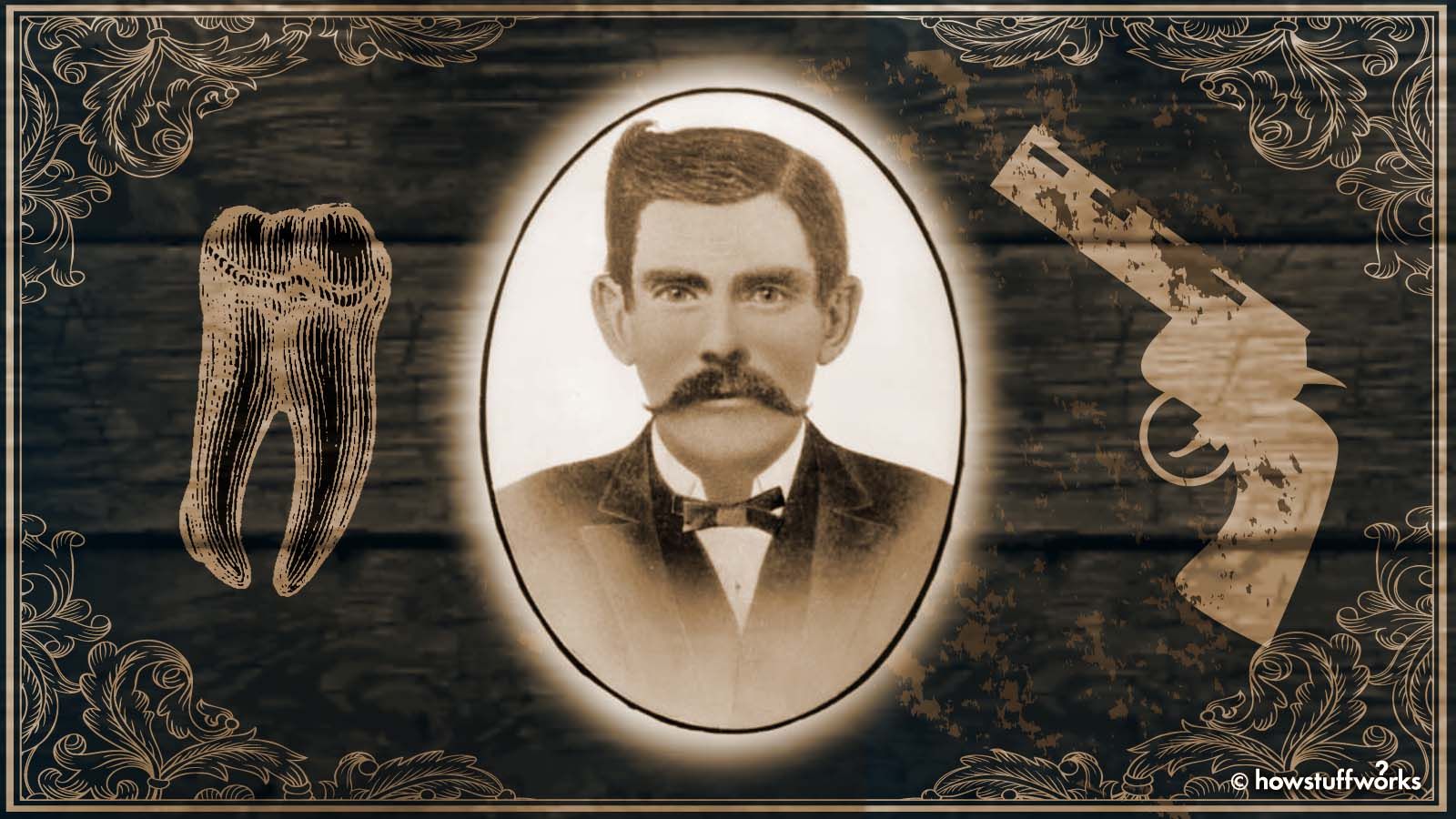
Source: Wikimedia Commons
Though he had a steady stream of work and a good income, Doc quickly grew bored of the monotonous routine of his life. His boredom inspired him to pursue a new hobby – gambling – and he took to it with glee.
Indulging His Vices
We all have our vices, but anyone who’s ever had a problem with gambling will already know the precarious position Doc Holliday was in. Add to this the fact that he was partial to alcohol. And you have a recipe for disaster. One night, he was drunkenly gambling, enjoying win after win, when a bartender got suspicious and accused him of cheating.

Source: Wikimedia Commons
Furious at this attack on his character, and filled with booze-fueled pride, Doc insisted that the bartender should put money on it if he was so sure. When the man refused, Doc upped the ante by challenging the poor fellow to a gunfight. This was the genesis for Doc’s transformation into a famous gunslinger and quarrelsome drunkard.
A Taste of Romance
People weren’t so subtle with nicknames back in the 1800s. We tell you this because one of Doc’s first loves was Mary Katherine Horony – a woman affectionately known as “Big Nose Kate.” Kate was a savvy business woman who worked as a bartender and who wasn’t afraid to do some dirty work if it would earn her a decent amount of cash.

Source: Pinterest
Doc found her charming, strong, and devilishly smart, so he married her right there in one of his favorite dance halls. Sadly, their happily ever after” didn’t last too long.
Deadly Doc
Doc Holliday was accused of shooting and killing a man, so he collected his new bride and took off for the appropriately named Dodge City. This town was everything you would imagine from the name: tough, filthy, filled with ruffians, and home to many of the Wild West’s most infamous outlaws.
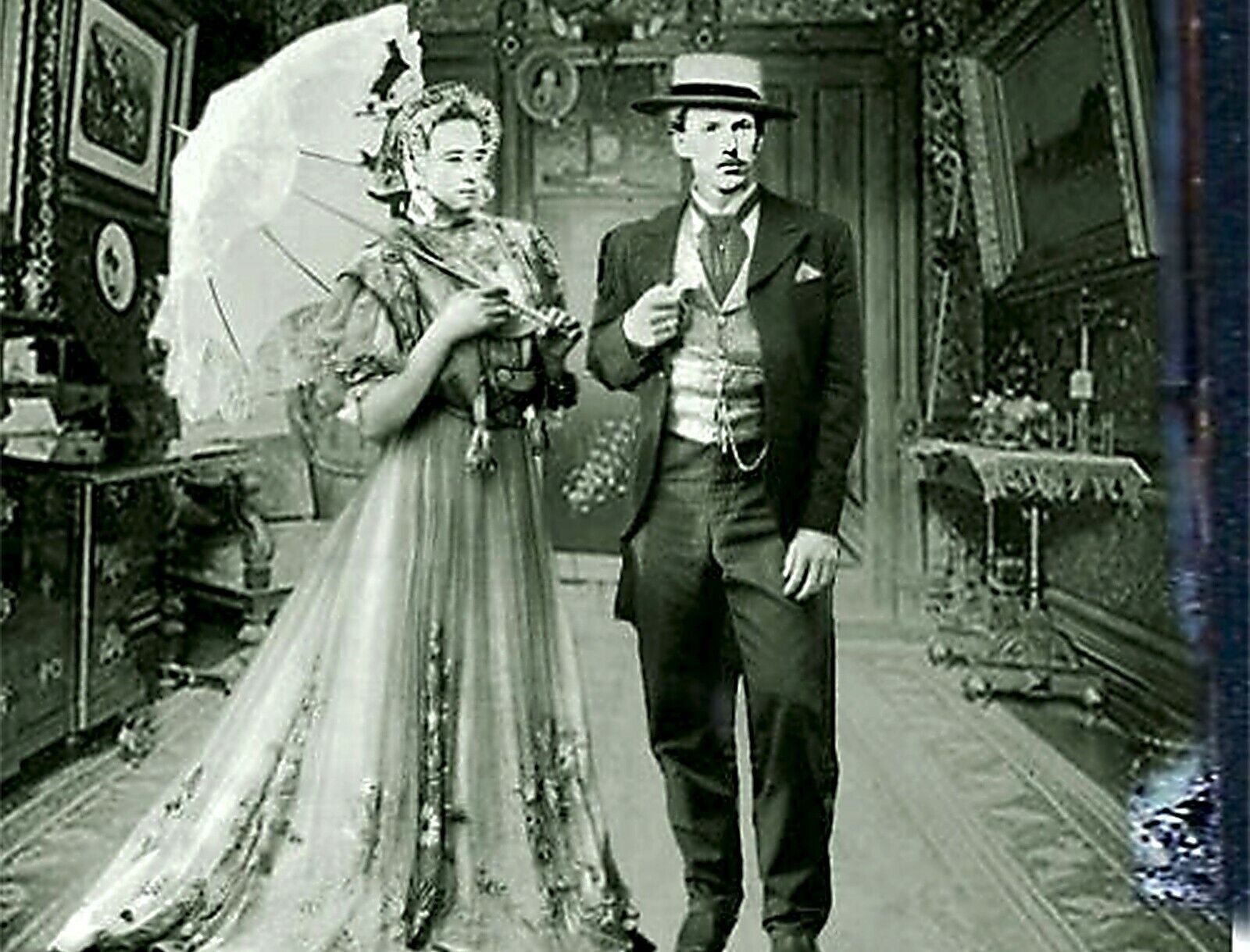
Source: Wikimedia Commons
There’s no hard evidence that Doc killed the guy he was accused of murdering, so that part of the story is up for debate. However, that didn’t change the fact that Doc had to hide from the law, and what better place to hide than a town most people were afraid to visit?
Friends in All the Wrong Places
Doc Holliday had the dubious honor of meeting Wyatt Earp during his time in Dodge City. Earp was a lawman, but he was also a gambler, and he’d made plenty of enemies in both these arms of his career. One night, a gang of miscreants with a grudge against Earp charged into Dodge City’s Long Branch Saloon, guns blazing.
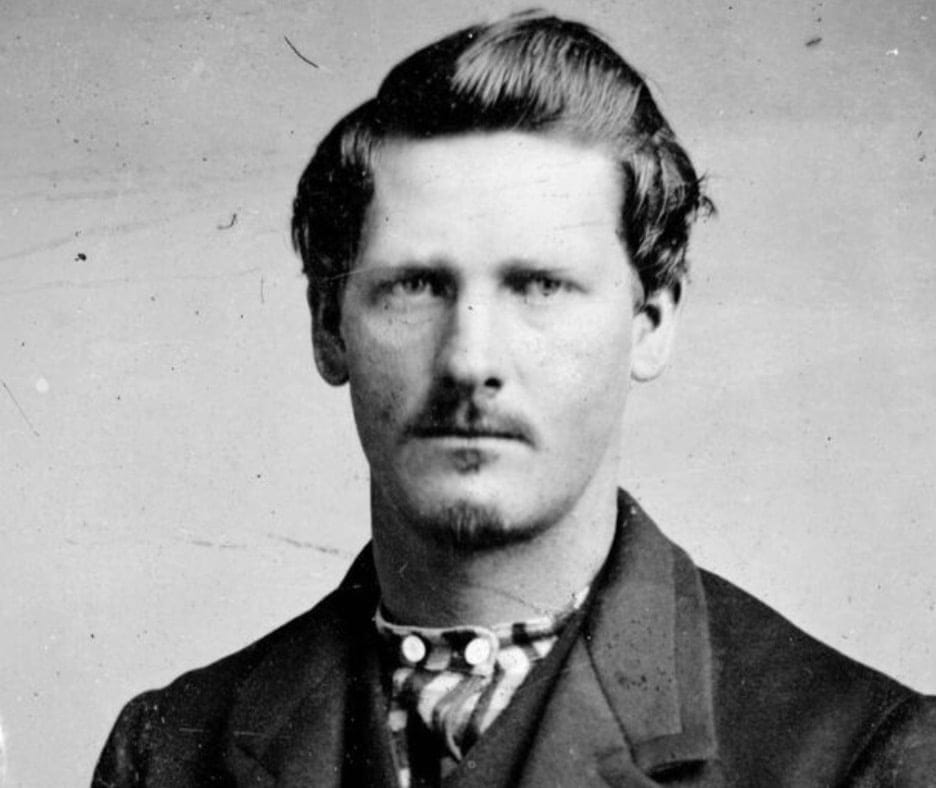
Wikimedia Commons / American Experience: Wyatt Earp on WXXI-TV
Doc was getting his drink on at the time, and quick thinker that he was, he dodged the ricocheting bullets before any of them could catch him off guard.
Bar Brawl
Wyatt rushed into the salon as soon as he heard what he’d soon discover as the bellow of Doc’s voice. Wyatt entered into the fray with his weapon drawn to defend Doc amid all the gunfire. The assailants were slightly taken aback. From then on, Wyatt and Doc formed their famed companionship.
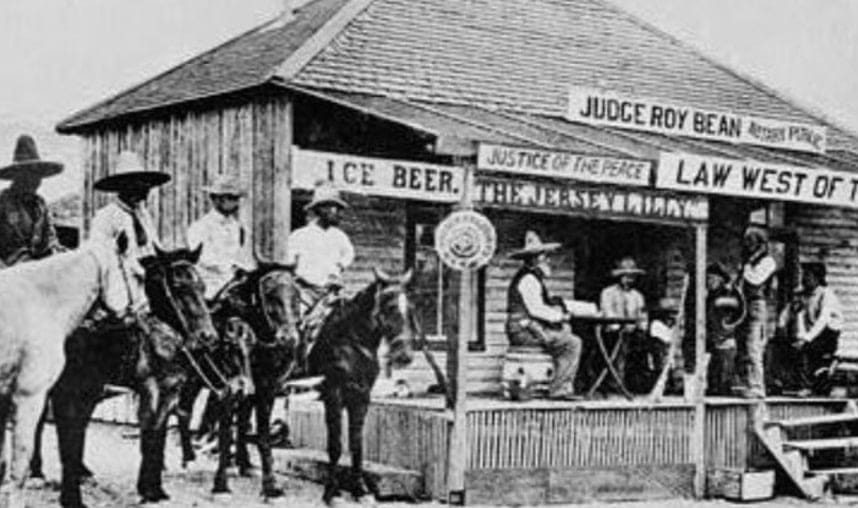
Wikimedia Commons
Eventually, the two made their way further west, away from Dodge to Tombstone, Arizona. Wyatt and Doc picked up right where they left off: running from one adventure to the next, passing through town after dusty town, side by side.
The Cowboys
Wyatt chose to work as a bank security guard because his brothers were Tombstone marshals, which was a logical choice given his family’s previous experience in the field. It didn’t take long for these law enforcement officers to come across a group of part-time criminals, better known as the Cowboys.
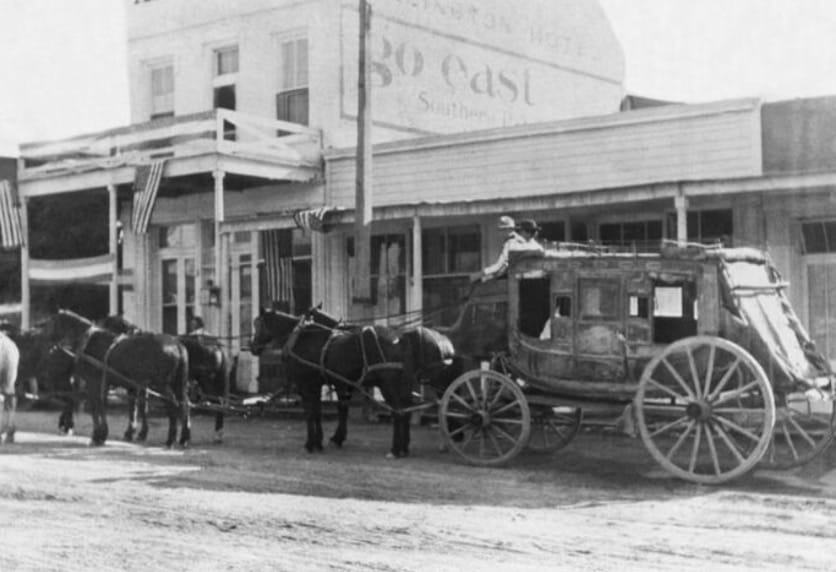
Underwood Archives/Getty Images
To deal with Ike and Billy Clanton and Tom and Frank McLaury, with Billy Claiborne, Earps made a split-second decision. They pursued the gang across the Arizona Territory.
Craziest Shootout Of All Time
After just 30 seconds of gunfire, the O.K. Corral became one of the most well-known events in American history. It all started on October 26, 1881, when Earp and Holliday retaliated against the Cowboys for threatening to murder them.

Robert Alexander/Getty Images
Nobody knows who fired the first shot, but there was no doubt about the number of people killed in the incident. After Virgil killed Billy Clanton, Doc Holliday shot Tom McLaury in the chest as vengeance, and Wyatt collided with Frank McLaury.
Arrested And Put On Trial
Things happened very quickly after 3 p.m. that autumn day. All that transpired on that tragic day happened decisively and rapidly as if it were a game. Billy and the McLaurys were dead in less than a minute after the shootout started.
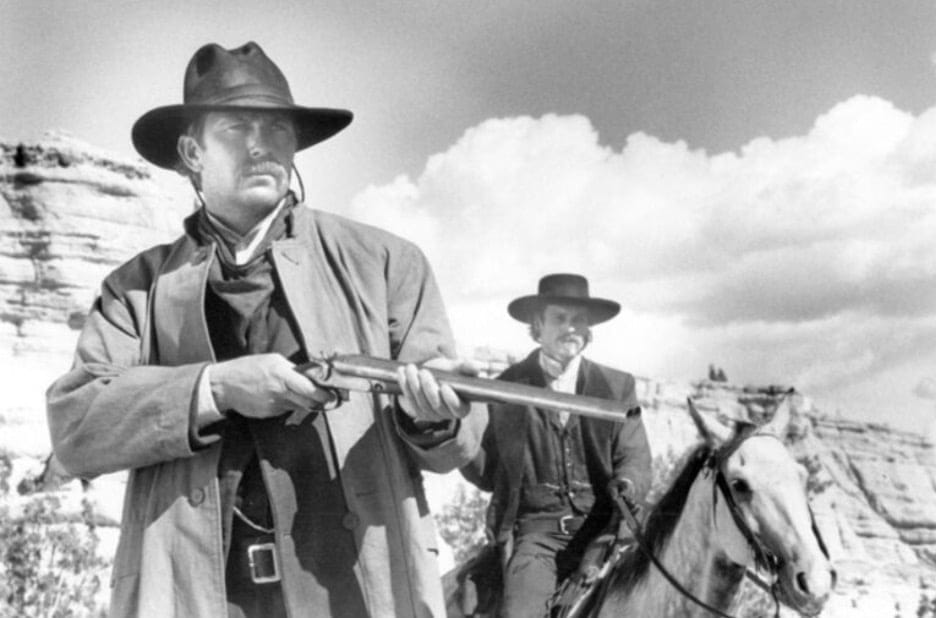
Michael Ochs Archives/Getty Images
Soon after the fatalistic incident, Wyatt and Doc were arrested for murdering their opponents. Still, much controversy has erupted since then regarding the legal ramifications of what was supposed to be a fair fight.
A Friendship Forms
While the prospect of a murder trial loomed over Wyatt Earp’s head, it didn’t prevent him from spending the winter in a jail cell with Doc Holliday, who had become his closest friend and companion over the years.

Wikimedia Commons
Besides being a skilled shooter with six guns, he describes Doc as “the most brilliant gambler he’d ever met,” as well as “the nerdiest, fastest, and the deadliest guy he’d ever met.”
Conflicting Accounts
This scenario was a challenging one for the judges. Though there was some evidence that Wyatt and Doc were in danger from a potential threat, there were also rumors the Cowboys had no weapons as they kept their hands for their execution.
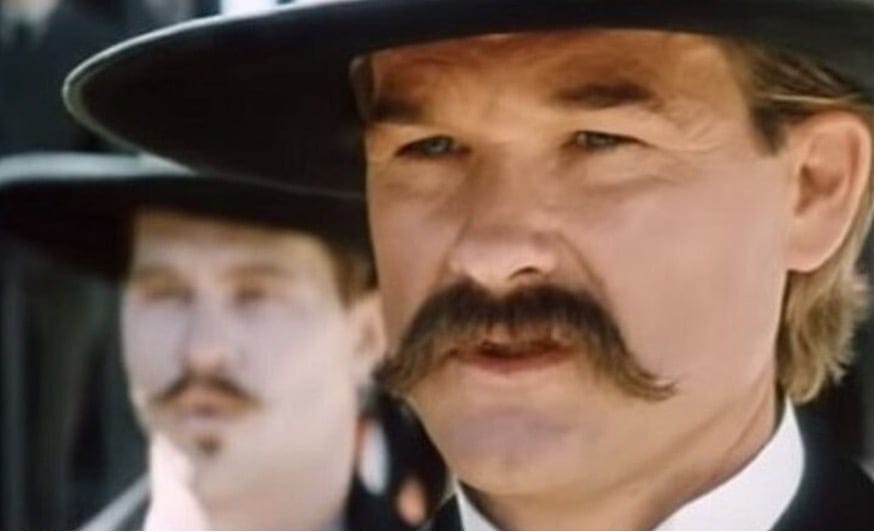
Hollywood Pictures
Conflicting accounts have led historians across the years disputing with little or no evidence to validate claims with certitude in either direction.
Who Shot First?
During the trial, witnesses gave contradictory testimony depending on whom they were supporting at the time of the questioning. Even reliable third parties could not agree on who was responsible for the attack.
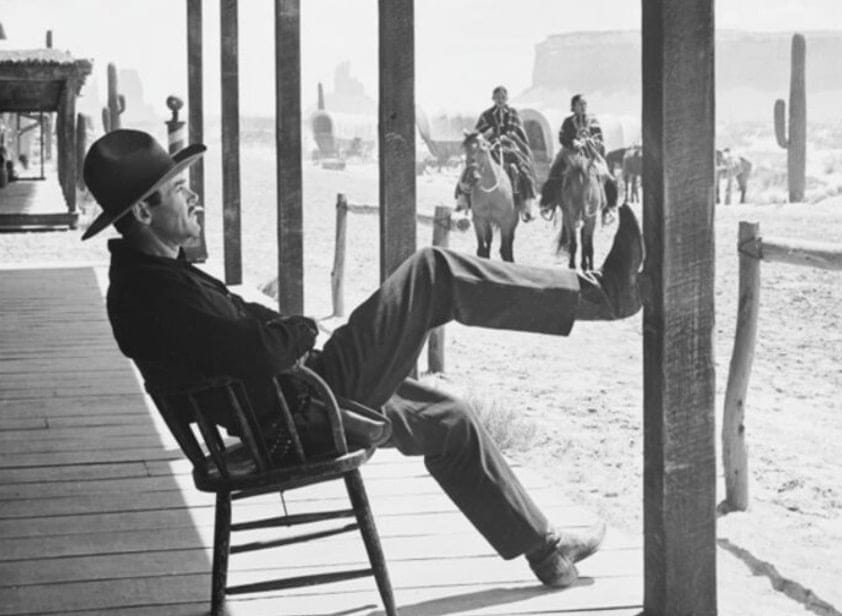
John Kobal Foundation/Getty Images
Although there is some mildly confirmed evidence and testimony, historians today face the difficult task of excavating truth from the tombs of time to determine what happened during this famous gunfight on Fremont Street in Tombstone, Arizona.
And The Verdict Is...
The gunfight at the O.K. Corral was presided over by Justice of the Peace Wells Spicer, who, on November 30th, 1881, made history by ruling that Wyatt Earp and his band couldn’t be found guilty in this highly documented case.
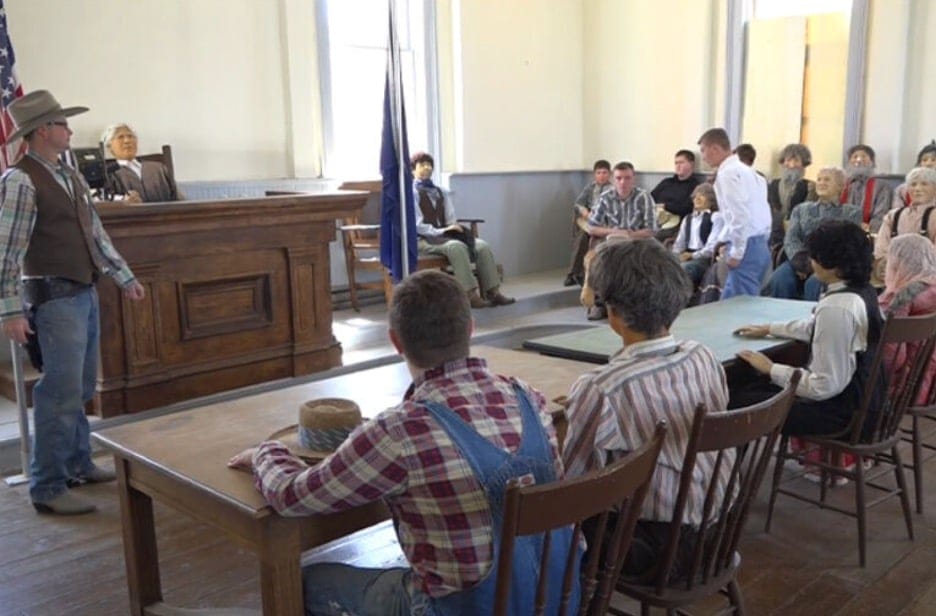
YouTube / Leslie Derkovitz
They were found to be acting like law enforcement officers and protecting themselves against a convicted gunfighter who had been part of a gang attempting to rob multiple establishments within their range of influence.
Their Destroyed Social Images
As for the second, and perhaps more important, point of view expressed by Wells Spicer, he believed that the men should never have been deputized in the first place. It was only after a brief period of deliberation that the jury concluded that the police officers were not guilty of the charges leveled against them.
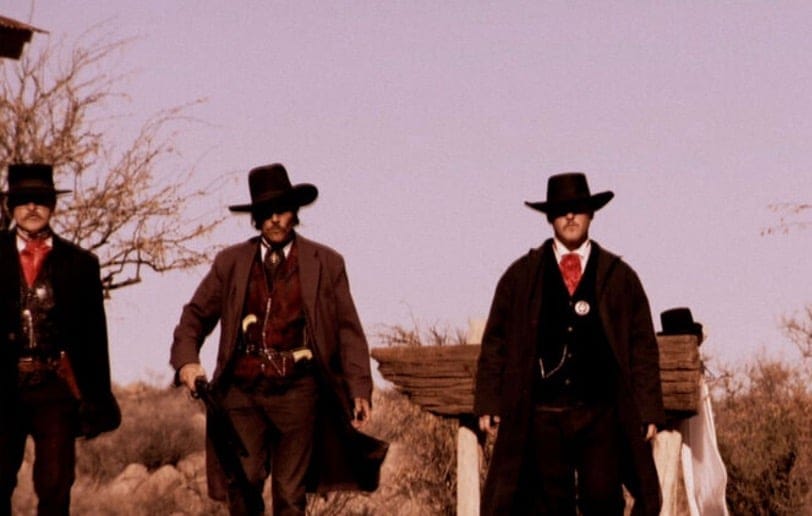
Hollywood Pictures
Even though they were not subjected to any legal consequences, their social standing was severely harmed due to their actions.
The Dentist Who Shoots Guns
Doc Holliday became well-known across the country as a swashbuckling, well-mannered dentist with a much-appreciated mustache.
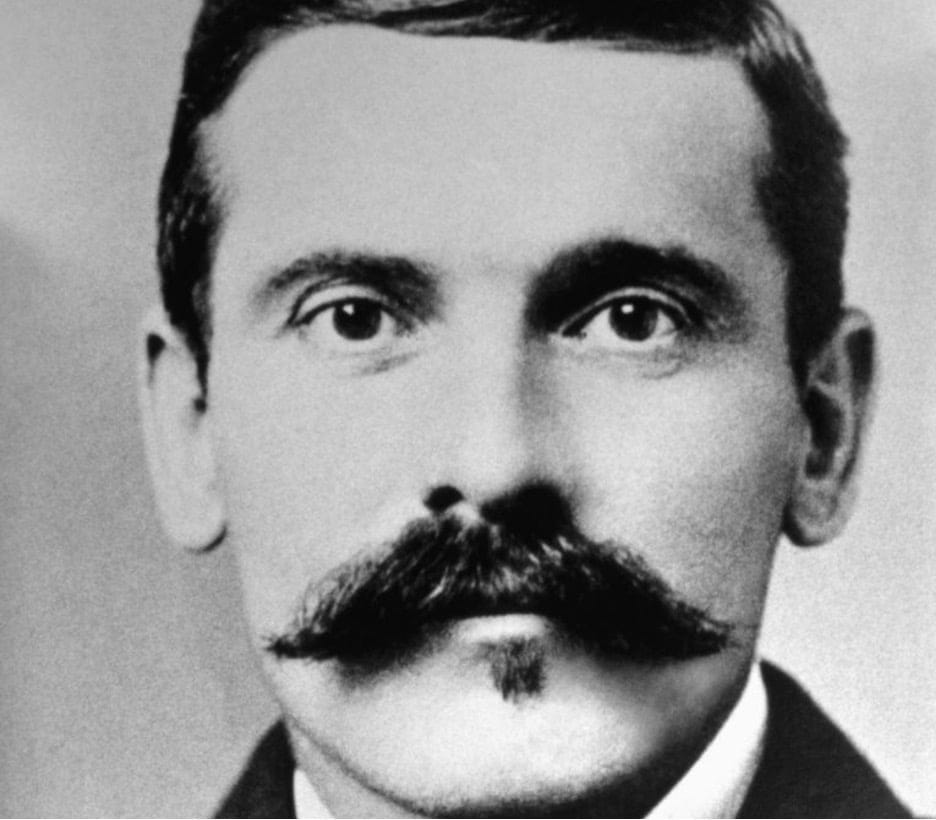
John van Hasselt/Sygma/Getty Images
Later, he rose to prominence as a gambler and pistol slinger who also happened to be a dentist, and he created quite a stir. Doc’s admirers wished to achieve at least the same level of success as Doc in his own right, if not more.
A Drifter From The West
Following the completion of the public trial, Doc chose to depart Arizona. He continued to gamble for the remainder of his life even as he sailed across the Western Frontier.
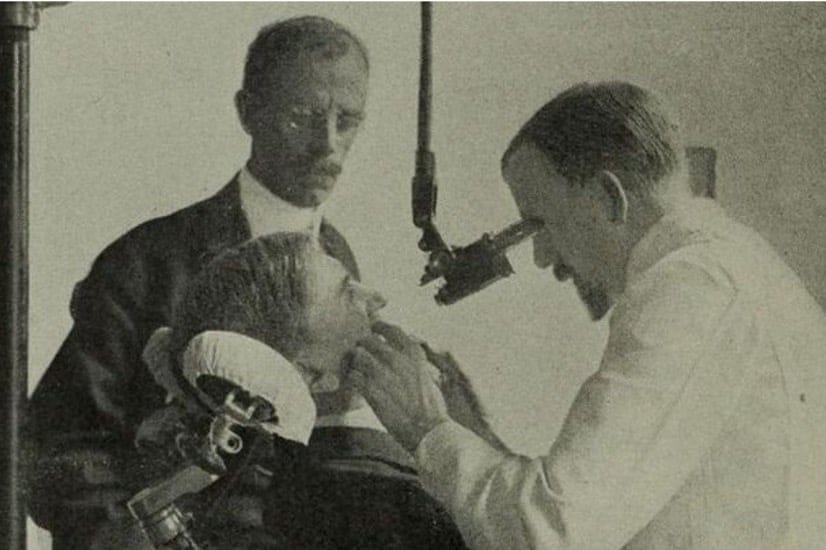
Wikimedia Commons
Later, it turned out that Doc had given up on pursuing a dental profession and instead became an avid gambler at this stage in life. He spent some time inside jails but ultimately survived longer than many people thought he would.
Not So Funny
In Glenwood Springs, Colorado, Doc died of tuberculosis on November 8, 1887. He was 36 at the time of his death. Then, as he was approaching the end of his life, he took another shot of whiskey and exclaimed, “This is funny.”
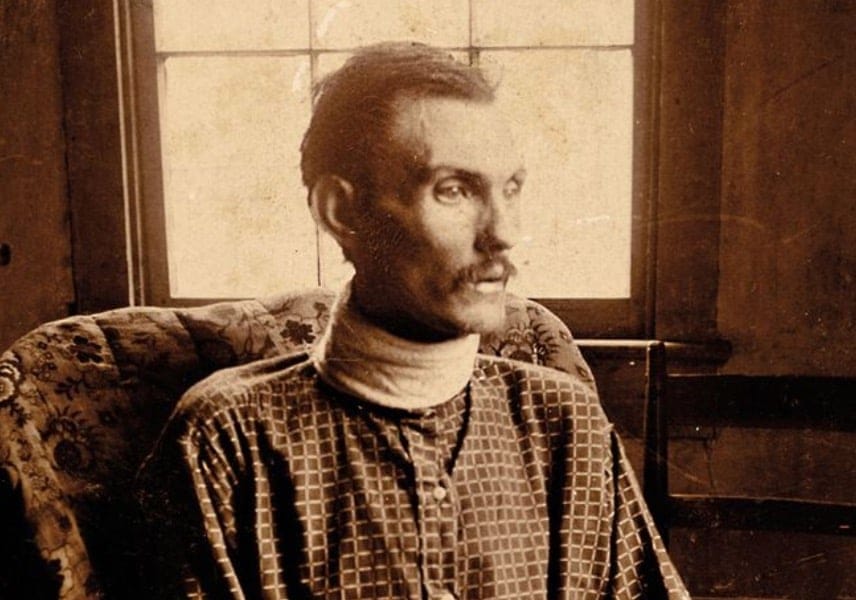
Facebook / The Adventures of Finius the Skinniest
Although it can be difficult for historians to ascertain the truth about Western legends such as Doc Holliday, the recent rediscovery of a photographer’s photos from Tombstone provides a much clearer picture of the period in question.
Remembering The Wild West Through Photographs
Photographer C.S. Fly set out to capture the historical events unfolding in the growing mining town of Tombstone, which had already established itself as a legendary destination throughout the United States. It was December of 1879 when he and his wife Mary arrived in Tombstone for the first time.
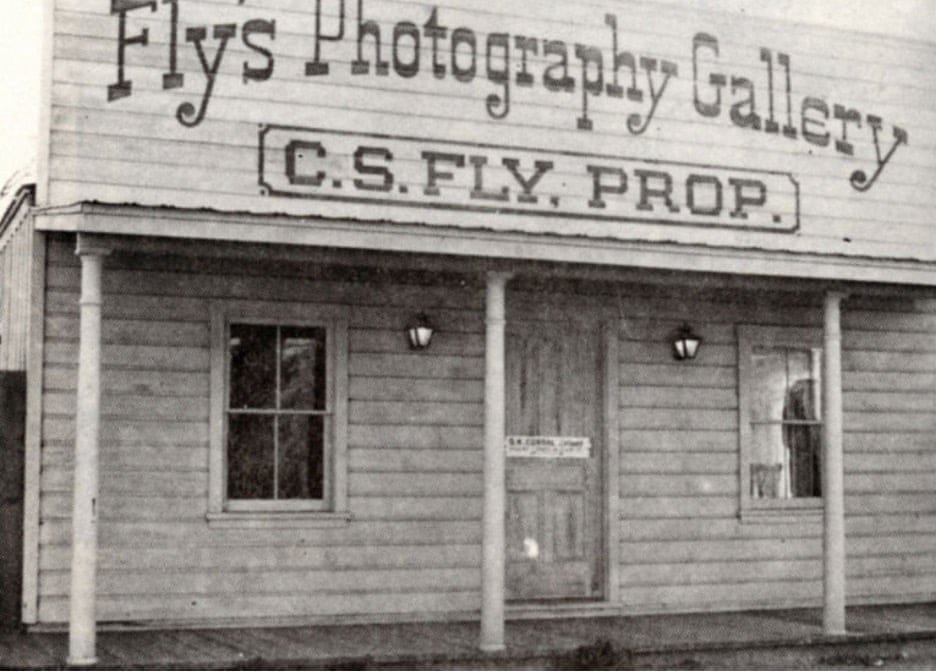
C.S. Fly / Wikimedia Commons | Public Domain
They set up a makeshift photo studio in a tent and immediately began taking photographs. In June of the following year, they converted a 12-room boarding house into a studio and gallery for their work. Here are a series of pivotal photographs that expose the lifestyle and history of the American Wild West.
The Notorious Geronimo
There was a meeting scheduled with General George Crook of the Department of Arizona for March in 1886, and Apache chief Geronimo was putting together his preparations for it.
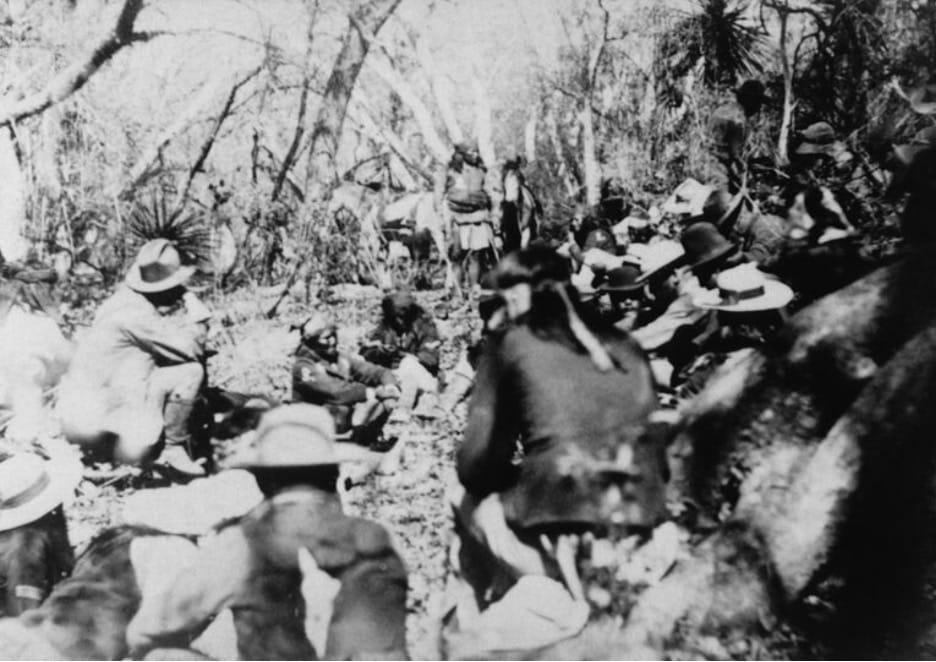
National Archives / CORBIS / Corbis / Getty Images
The military member was invited to attend the meeting, which C.S. Fly decided was significant enough to accompany him. A photograph of Geronimo presiding over a gathering of Apache leaders is displayed above.
Living Wages
Tombstone, a thriving mining town in the late 1800s, wasn’t always so. From here, you can see the ever-talking Tough Nut Mine, with its gated entrance in the background. Tombstone founder Ed Schieffelin controlled this mine with his brother Al and business partner Richard Gird.
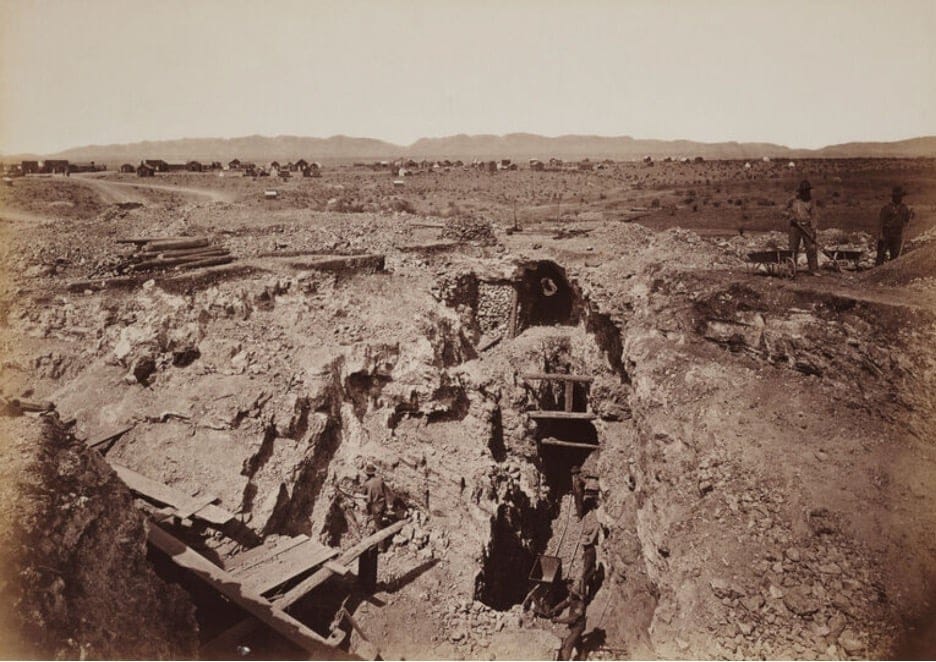
Carleton Watkins / Wikimedia Commons | Public Domain
The Tough Nut Mine miners loved their jobs because they weren’t as dangerous as other mines. It was also one of their most accessible jobs because they didn’t have to dig very deep to find yellow ore, unlike other mines where there was practically nothing to find deep underground!
John Slaughter
John Slaughter is a famous figure to the many residents that live in towns scattered throughout Arizona and New Mexico.
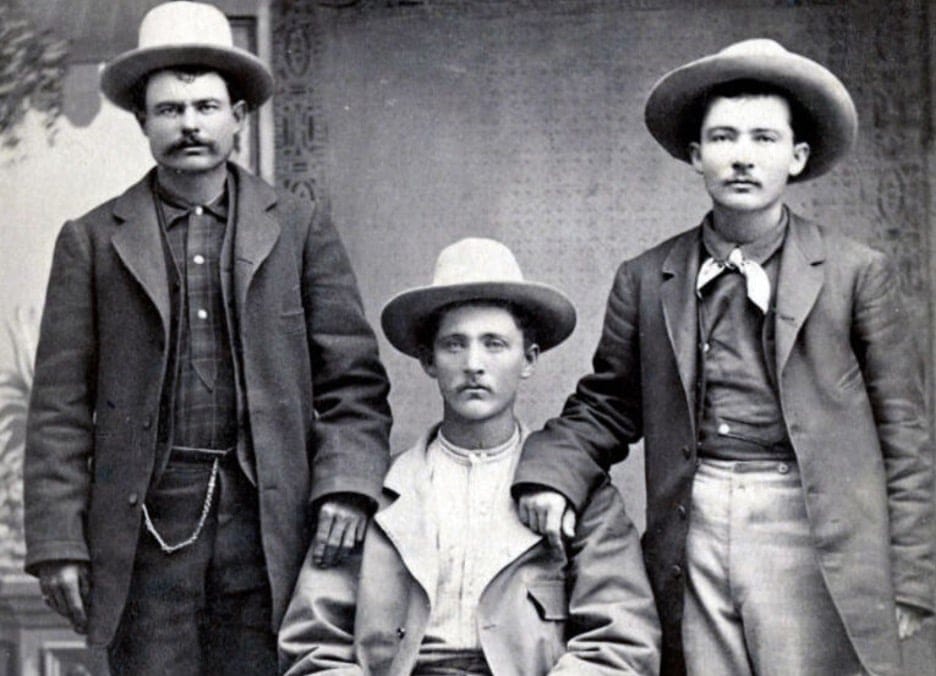
C.S. Fly / Buyenlarge / Getty Images
Armed for protection with six-shooters, rifles, lassos, horses, and saddles, he and his men were responsible for bringing the first herd of cattle from California to Arizona Territory in 1877.
Apache May
For his fighting prowess, John Slaughter, the good Samaritan, was a hero to many people. He was a hero to the Apaches, too, as he protected the young Apache girl May, a victim of the Apache War, from harm.
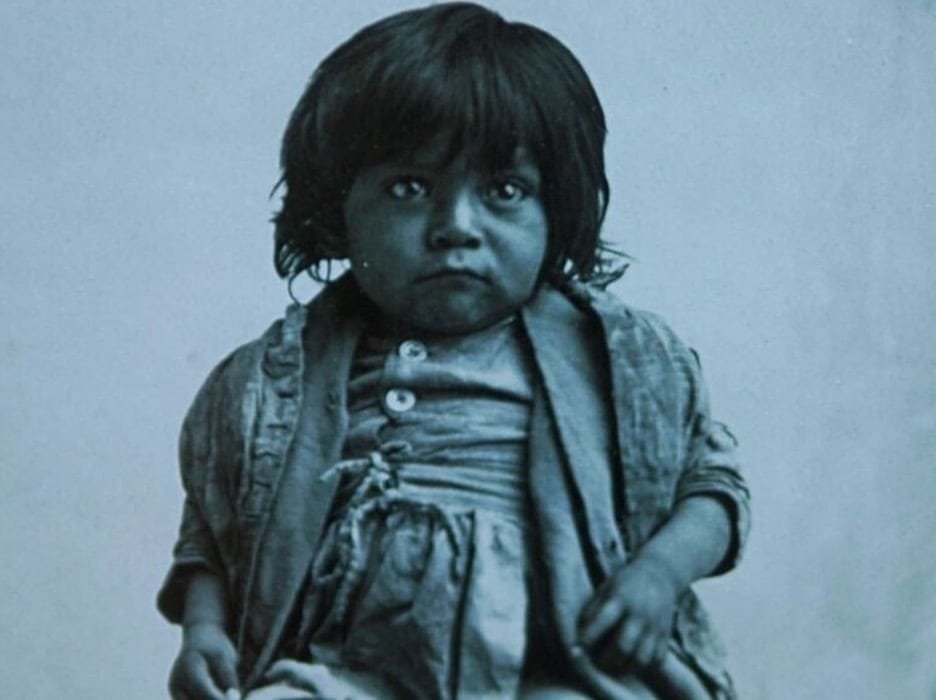
C.S. Fly / Wikimedia Commons | Public Domain
When he was searching for a band of Apaches, he came across May, a young girl who appeared abandoned or whose parents had been killed. This may have led him to get to know May and eventually adopt her as his child.
Put Money On It
Because of the abundance of gold, silver, and copper mining in the area, people in historic west Arizona had a great deal of spare time to enjoy themselves.
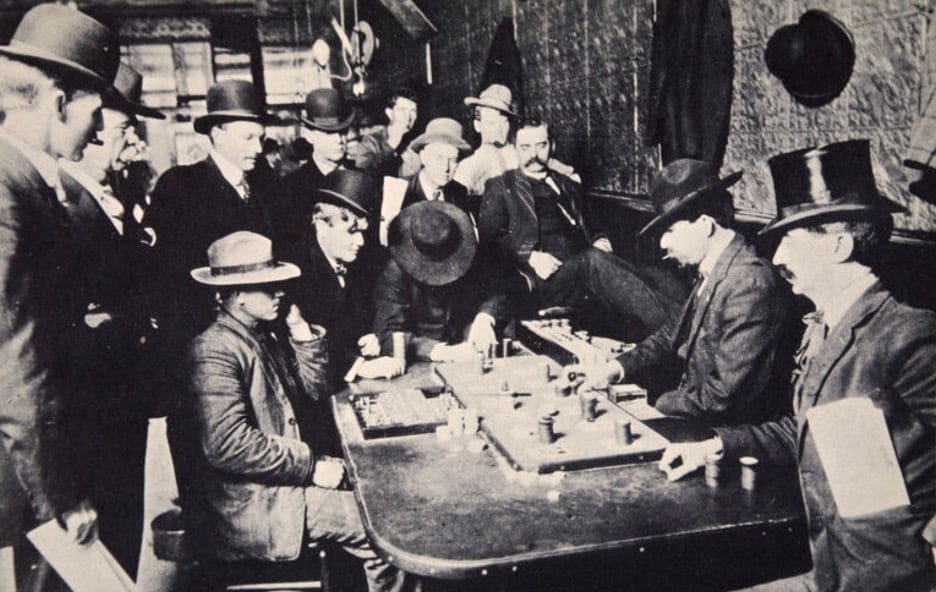
Historica Graphica Collection / Heritage Images / Getty Images
In the West, they would play the Faro card game. They played it at the Orient Saloon in Bisbee, Arizona. Now and then, the residents of Tombstone would enjoy a good game of chance as well.
A Town That Isn't Sleepy
With around 100 people at the beginning of the twentieth century, Tombstone, Arizona, was hardly living up to its name as one of the sleepiest towns in America.
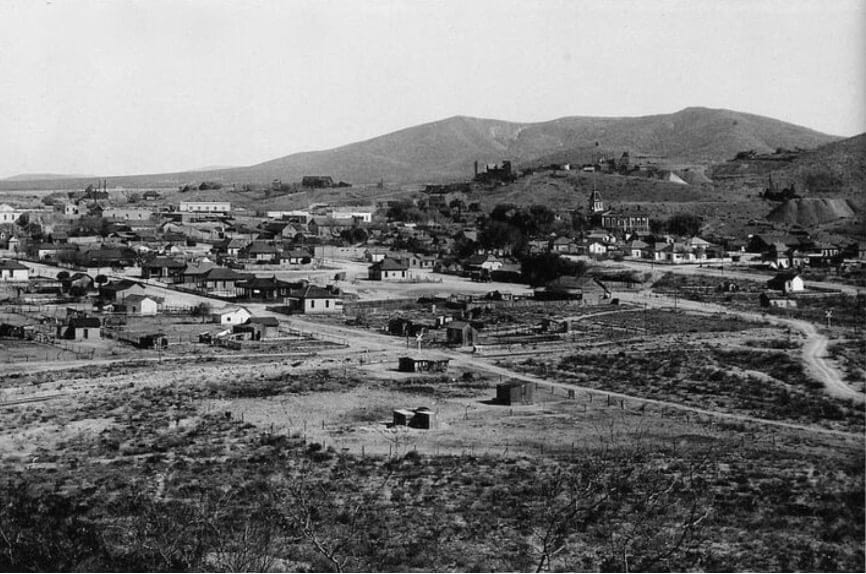
Buyenlarge / Getty Images
However, after just seven years of the silver mining boom, it had grown to 14,000 citizens. It saw an influx of even more diverse individuals drawn in by the promise of starting new businesses and opening up shops. During this time, many unusual occurrences happened in Tombstone, which eventually led to its worldwide fame as “the town too tough to die.”
Constructing A Legacy
This image depicts a photo of George Parsons, Tombstone’s most prominent historian. As the city quickly rose to fame for its Wild West flair, so too did Parsons’ passion for writing about truthfully documenting its history.
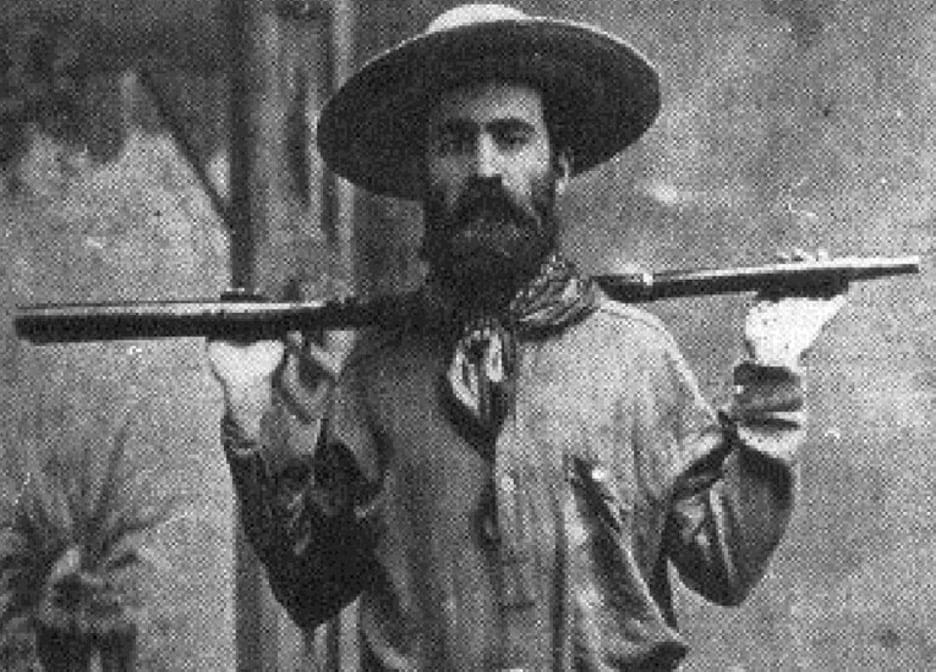
C.S. Fly / Wikimedia Commons
While maintaining his life as a practicing lawyer, he wrote about the escapades of the outlaws who passed through the city and the townspeople who lived there. Later in life, he would leave his career behind to become a banker and record Tombstone’s legacy throughout his writings.
Geronimo And His Tribe
Geronimo developed an interest in photography due to his meeting with Crook and C.S. Fly in the following months.

API / Gamma-Rapho / Getty Images
Fly was commissioned to take this photograph of Geronimo and his fellow tribesmen in the field, which he did. Tsisnah, Geronimo’s son, stands by his side as he mounts his horse for the first time in this photograph.
The Tombstone Mines
Tombstone made most of its money in the 19th century from transporting ore from mines to nearby stamp mills. Stamp mills were heavy machines that crush rocks into a fine powder, which was used to separate gold and silver from rock.
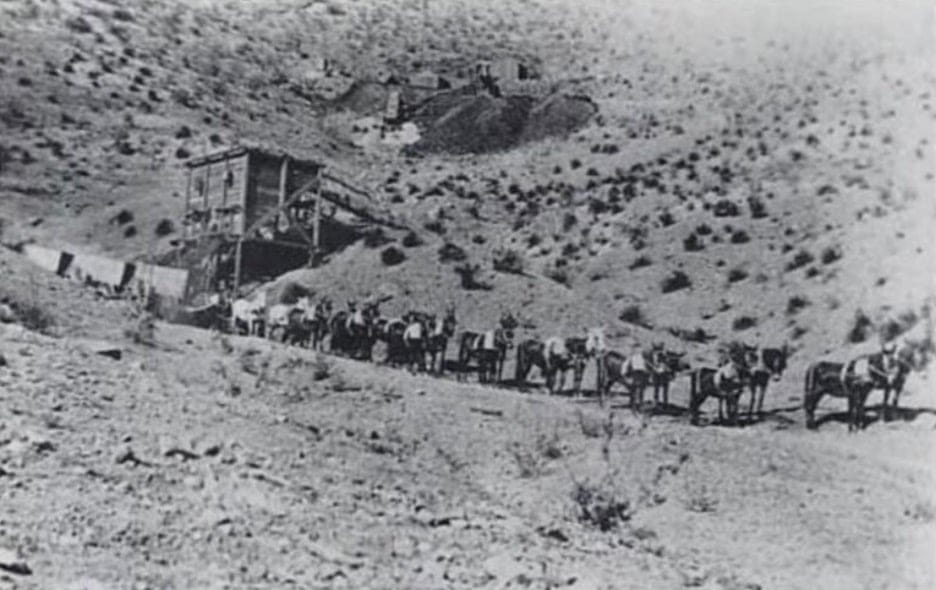
C.S. Fly / Wikimedia Commons
As C.S. Fly documented, these mules moved ore from the mining area into the mills.
Samantha Fallon
Samantha Fallon is pictured at the San Jose House Hostel and Millinery Shop in Tombstone, Arizona.
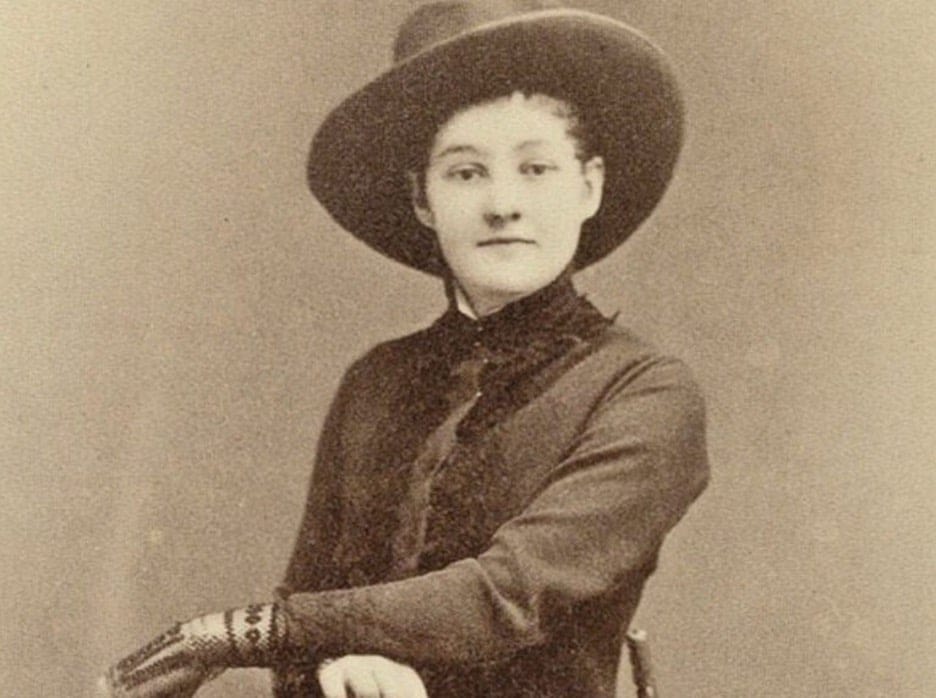
Paul-Belgium / Reddit
Samantha and Ed Schieffelin, the creator of Tombstone, were in a relationship before they married other people.
Surrender By Geronimo
When a troop of Apache warriors under the command of their brave leader Geronimo emerged from the woods, C.S. Fly was there to witness the event.
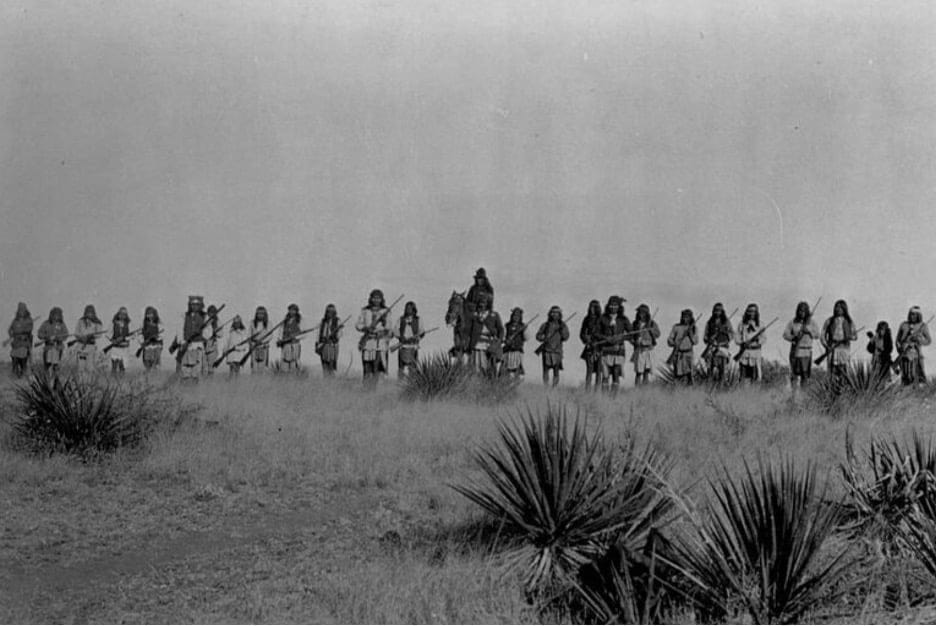
C.S. Fly / Library of Congress / Corbis / VCG / Getty Images
This photograph was taken on the 27th of March, 1886, in the Mexican highlands of the Sierra Madre, just minutes before Geronimo surrendered to General Crook. The event took place in the Mexican highlands of the Sierra Madre.
O.K. Corral Shootout And Boot Hill Cemetery
As you know, one of the most significant events in Wild West history occurred on October 26th, 1881 – it was the day that the Clanton Gang was subdued after a long and challenging gunfight with Wyatt Earp, Doc Holliday, and those they fought alongside.
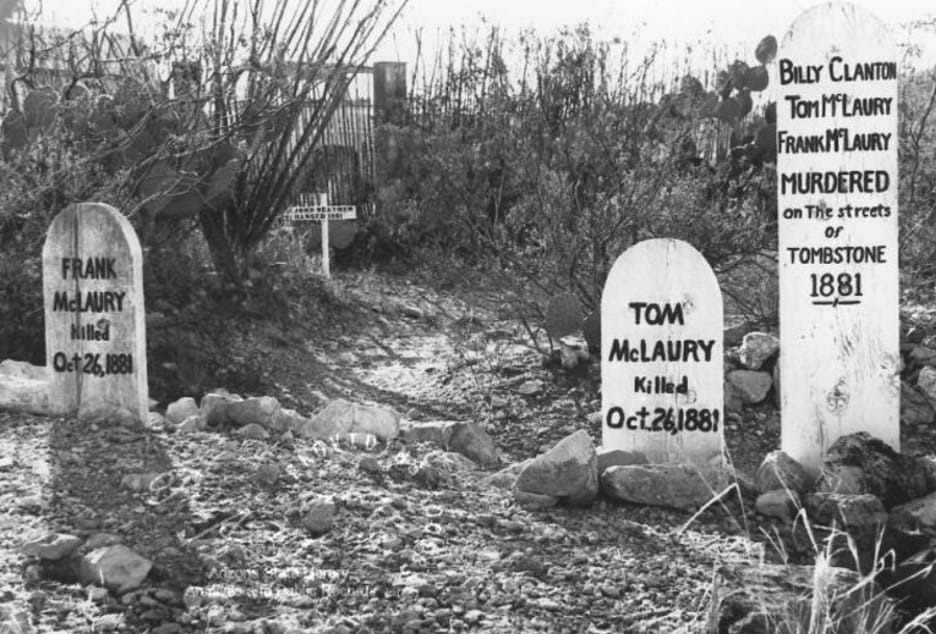
Arizona State Library, Archives and Public Records. History and Archives Division.
Tom McLaury, Frank McLaury, and Billy Clanton wouldn’t stand a chance against their adversaries! These ruthless bandits are all buried in Tombstone’s Boot Hill Cemetery, where visitors pay their respects.
Potential Peace In The West
After Geronimo’s surrender, Apache leader Naiche accompanied troops from General Crook’s group to a rendezvous with the Mexican military and various Apache bands, who were also there to finalize an agreement.
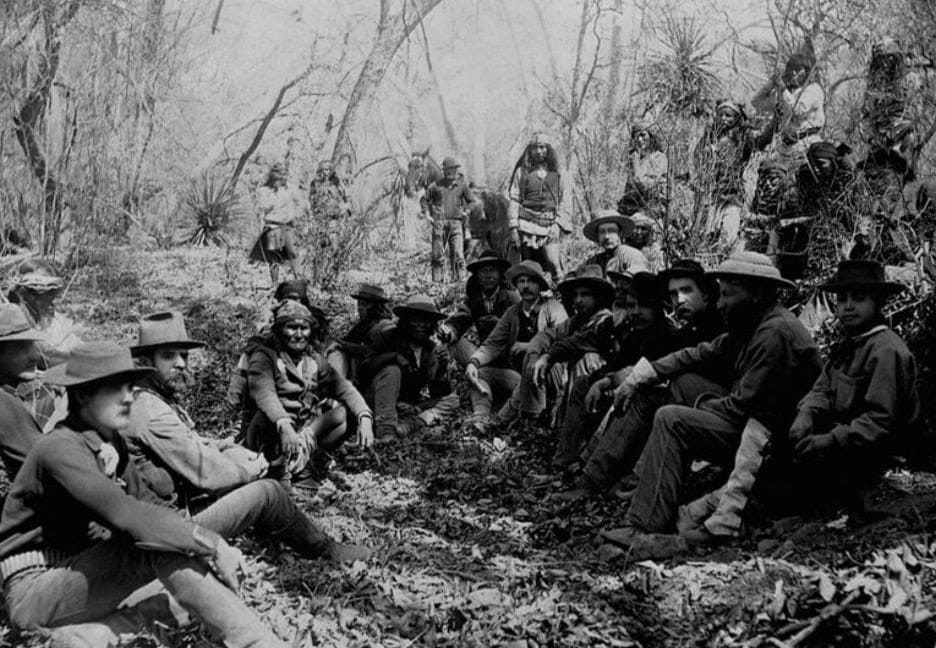
C.S. Fly / Library of Congress / Corbis / VCG / Getty Images
As unusual as it was for soldiers from opposing armies and potentially lethal opponents to be in the same place at once, both parties put aside their personal feelings about each other for the greater good of an agreement that would ensure peace for everyone involved.
The Grand Hotel
It is possible to see the Grand Hotel in the background of this scene. When it comes to lodging options in Tombstone, few compare to the Grand Hotel, which is widely considered the most opulent in the entire state.
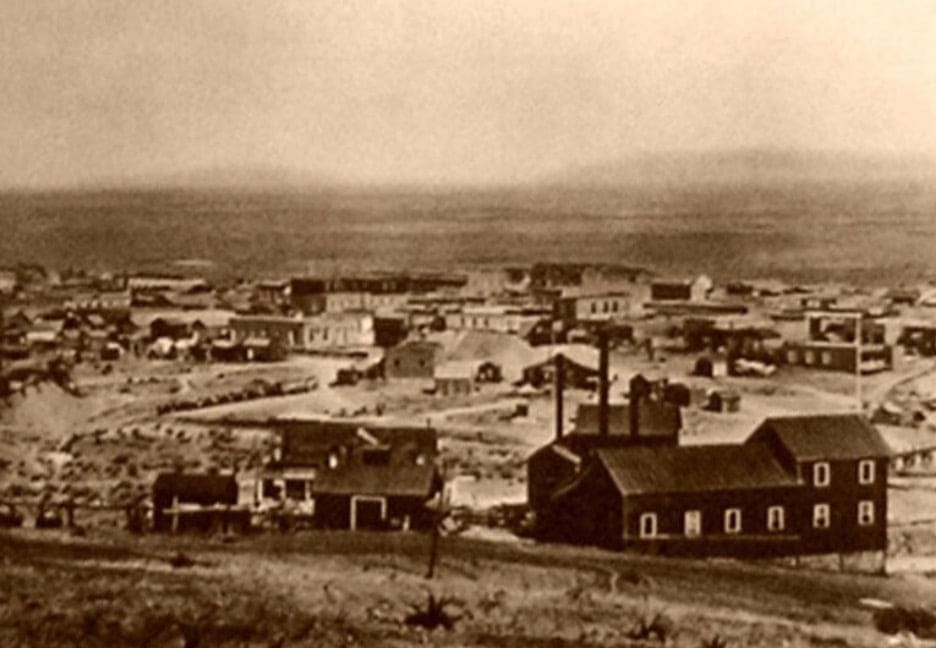
C.S. Fly / Arizona Historical Society / Wikimedia Commons
As a result of the great fire of 1882, C.S. Fly demonstrated that he was a visionary by developing one of the state’s first resorts, which is still in operation today.
A Brand New Place To Call Home
It is possible to witness many Apache children here in this area. “Jimmy” McKinn is a boy kidnapped by Apache warriors in Silver City, New Mexico, and taken far away. Luckily, he became quickly attached to his new life amongst these people.
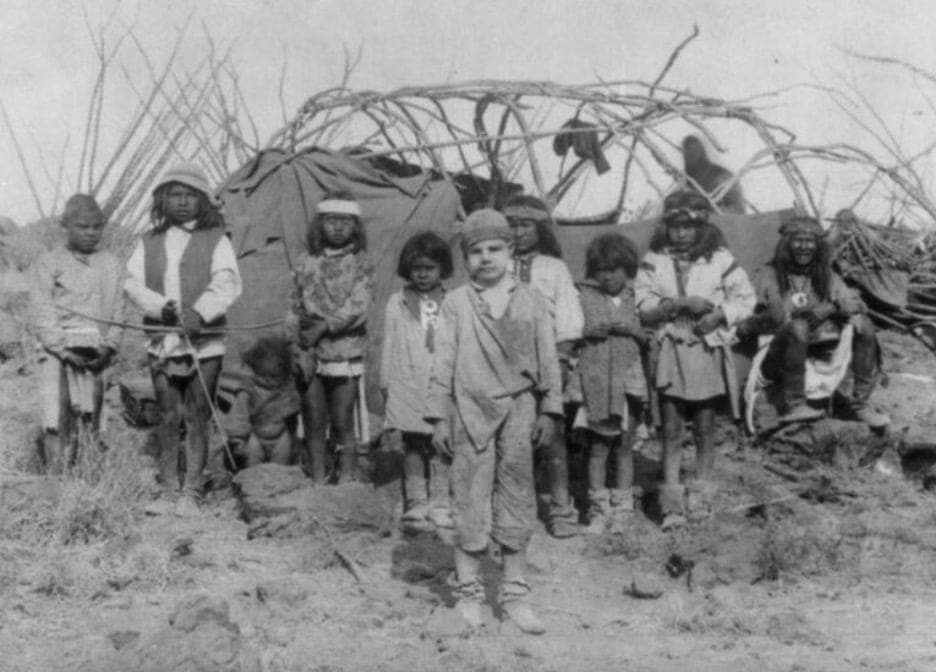
C.S. Fly / Library of Congress
Even though he was held against his will, he eventually chose not to return with the soldiers, instead preferring his new way of living, despite initial resistance.
The Historical Shootout Site
In this historical photo from the Wild West, we see the remains of the O.K. Corral, the site of one of America’s iconic historical shootouts.

John van Hasselt / Sygma / Getty Images
This infamous battle may have only last thirty seconds, but within that timeframe, thirty shots were fired and the conflict became ended three lives.
Preparation Is The Key To Success
As Geronimo was surrounded and on the verge of surrendering in the final days of his surrender proceedings, it was unclear what kind of resistance the Apache chief would mount against the United States Army.
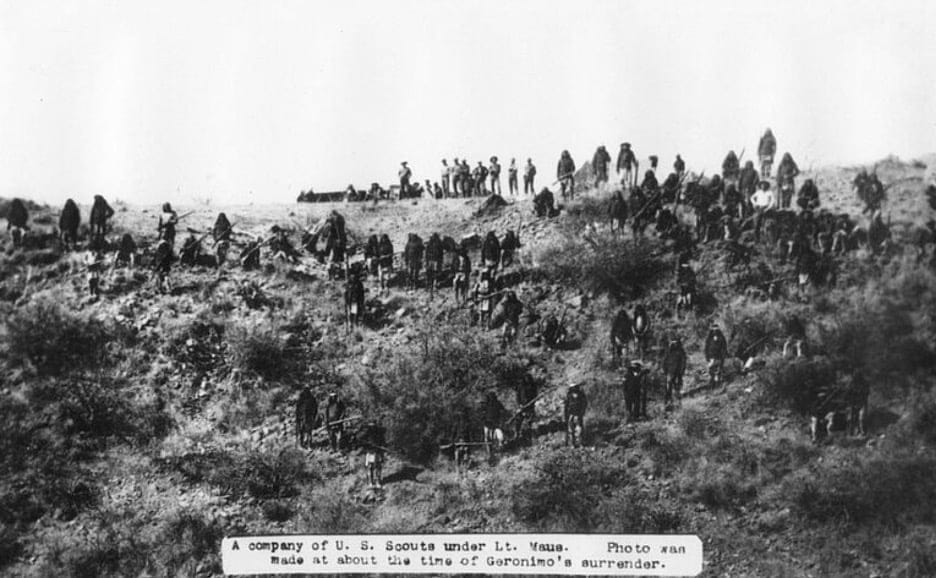
C.S. Fly / The New-York Historical Society / Getty Images
Because scouts like Lieutenant Maus were on standby, they were prepared to meet any challenges they might encounter while tracking down and invading Apache territory. Fortunately, this did not become a problem.
Taking Pride In Their Work
Upon Geronimo’s request, this picture was taken to remember the respected Apache chief at his most famous peak in life.
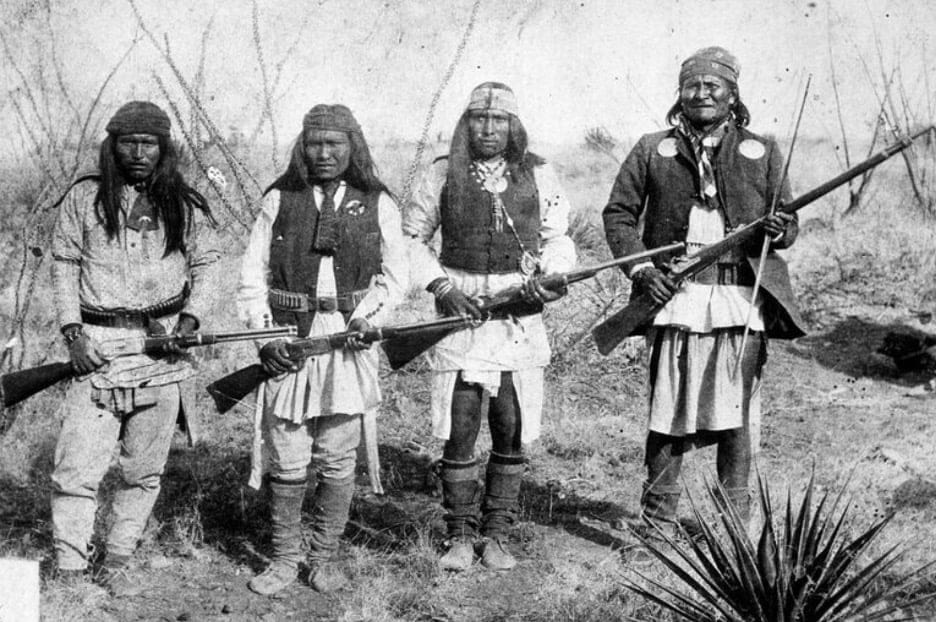
MPI / Getty Images
“Geronimo” is perhaps one of the few names that strike fear into the hearts of white settlers and troops alike even today due to his legendary part in Wild West history, where he became renowned for his military tactics, which attracted many and fueled fear in others.
Raging Inferno
Although his widow Mary carried on the couple’s photography feats after her husband, C.S. Flyer, passed away in 1901, the family business was unfortunately burned down in 1915 by a fire that came as a total surprise to everyone who had followed their work for so many years.
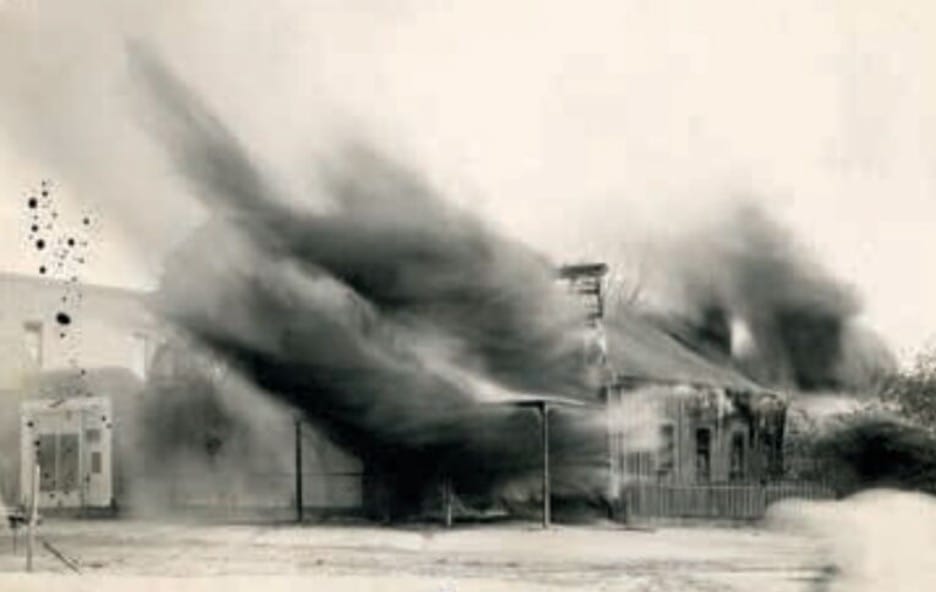
Mary Fly / Wikimedia Commons
This photograph of the studio’s ashes and smoke is said to be taken by Mary as perhaps one final tribute to their life’s beloved art before its entire history was washed away by flames.
